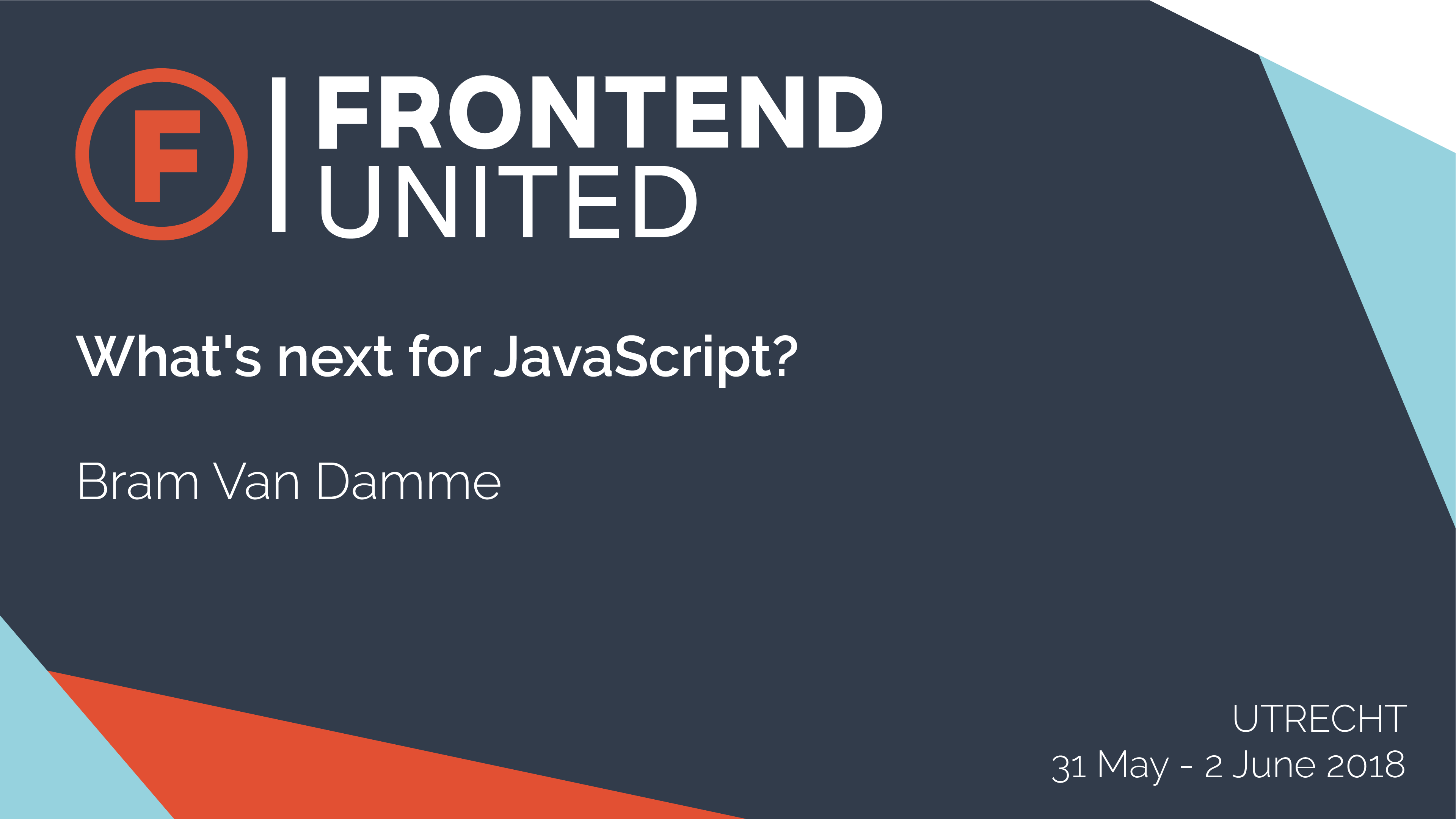
I’m currently in Utrecht for Frontend United and have just finished my talk ”What’s next for JavaScript?”. Earlier this week I also gave a shortened version of this lecture at JSConf.be
With ES2015 a lot has changed in JavaScript-land. Lesser known releases are the ES2016 and ES2017 releases. This talk not only touches these two new releases, but also looks forward at what’s to come next for JavaScript (ES2018 and more).
The slides are up on slidr.io, and also embedded below:
UPDATE 2018.06.12 A recording of my session has been put online:
The talk consists out of a few sections:
- JavaScript Yellow: How to get JavaScript Yellow on your website (a plea to using the right tool for the right job)
- The JavaScript timeline: its birth, its standardisation, and its releases
- ES2015: Highlight few of the ES2015 features I use on a daily basis
- ES2016: All new features that are part of ES2016
- ES2017: Highlight few of the ES2017 features I use on a daily basis
- ES2018: Highlight few of the ES2018 features I use on a daily basis or get me excited
- TC39: An intermezzo on TC39 and what they do, how they work, etc.
- ESNext: An look at a selection of proposals that get me excited, but are not part of the ECMAScript Specification (yet)
- ESNext, now: how/why you can use certain language features now, even though they’re not stage-4 yet
- Fin.
Thanks to the organisers for having me, and thanks to the attendees for coming to see me. Extra thanks go out to Mathias Bynens for doing an impromptu review of my slides. I hope you all had fun watching this talk. I know I had making it (and bringing it forward) 🙂
And now … time for a beer 😉
🔥 Like what you see? Want to stay in the loop? Here's how:
Leave a comment